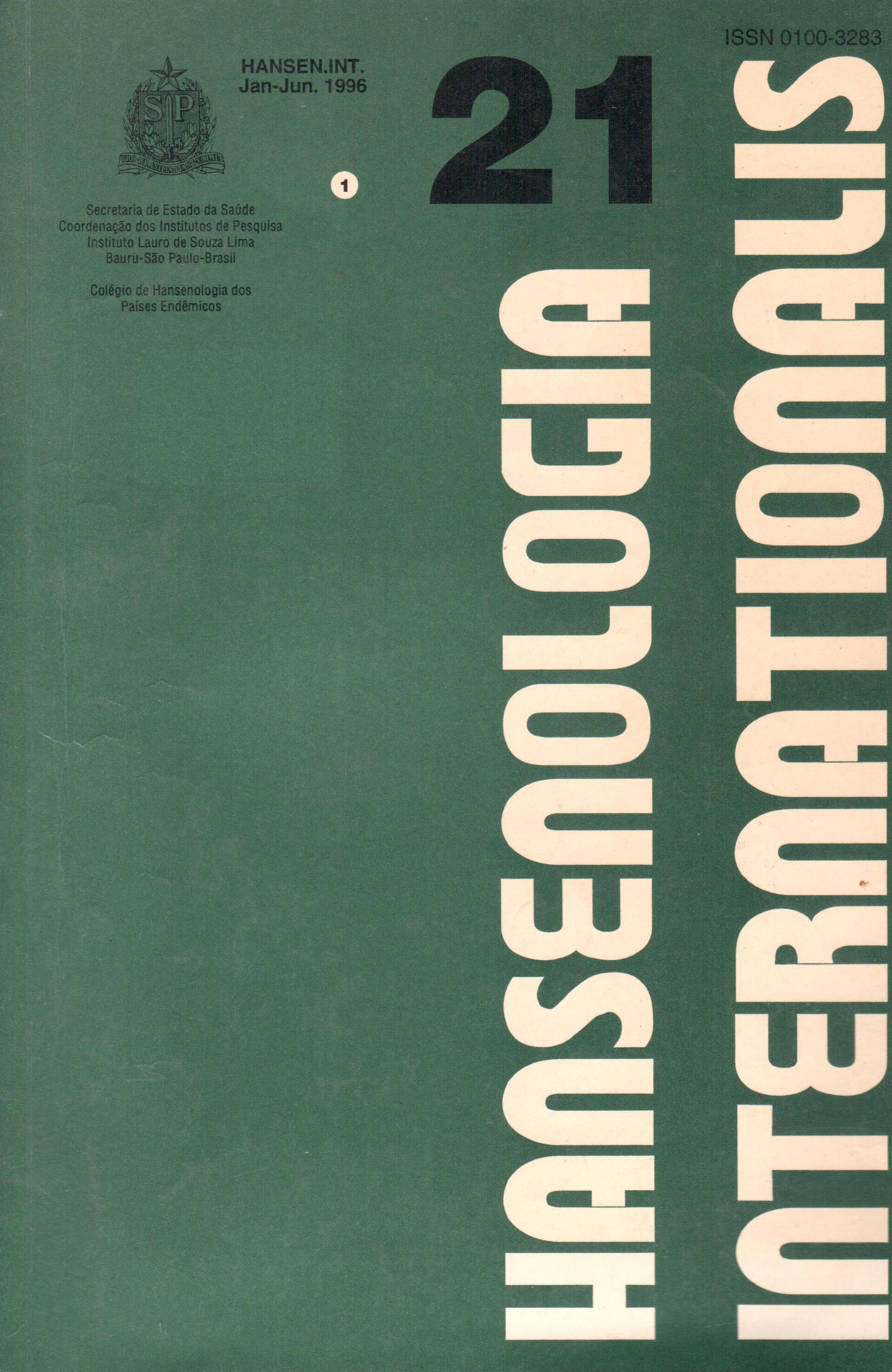Resumo
São apresentados três casos de pacientes portadores de formas multibacilares de hanseníase que apresentaram maculas hipocrômicas, em média seis meses após o término da poliquimioterapia/OMS para multibacilares (MB). Baseados nos exames baciloscópico, histopatológico e na evolução clínica favorável, com ou sem corticoterapia, firmou-se o diagnóstico de reação reversa macular, atípica, para estes casos. Discute-se este diagnóstico, em oposição à hipótese de recidiva de forma PB em pacientes inicialmente MB. Enfatiza-se a necessidade de uma correta caracterização das lesões de reação reversa pós-alta medicamentosa, evitando a reintrodução terapêutica desnecessária.
Referências
2. RABELO, F.E. Simpósio sobre a experiência brasileira com a sulfonoterapia. Arq Min Leprol., 12: 285-426, 1942.
4. QUAGLIATO, R, BECHELLI, L.M. E MARQUES, R.M. Bacterial negativity and reactivation (relapse) of lepromatous out patients under
sulfone treatment. Int J Leprosy., 38 (3): 250-63,1970.
5. QUAGLIATO R, BERQUÓ, E. E LESER, W. Lepromatosos em tratamento sulfônico. Rev. Bras. Lepr. 29(1): 19-30, 1961.
5. ERICKSON, P. T. Relapse following apparent arrest of leprosy by sulfone therapy. lnt J Leprosy, 19(1):63-74, 1951.
8. PETTIT, J. H. S., REES, R. J. ,RIDLEY, D. S. Studies on sulfone resistance in leprosy. I. Detection of cases. Int. J Leprosy, 34(4):375-390, 1966.
7, PEARSON, J.M.H, ROSS, R.J., REES, R.J.W. DDS resistance in Ethiopia-a progress report. IntJ Leprosy, 44 (1/ 2 ): 1400-142,1976.
8. ALMEIDA J.G. et al. Relapse rates in lepromatous leprosy according treatment regularity. Int J. Leprosy, 54(1):16-20, 1986.
9. CARTEL, J.L. et al. Longitudinal study on relapses of leprosy in Polynesian multibacillary patients on dapsone monotherapy between 1946 and 1970. Leprosy Rev, 62 (2):186-192, 1991.
10. WATERS, M.F.R. Relapse following various types of multidrug therapy in multibacillary leprosy. Leprosy Rev., 66 (1): 1-9, 1995.
11. FUNDAÇÃO NACIONAL DE SAÚDE/MINISTÉRIO DA SAÚDE/CNDS. Gula de Controle da Hanseníase. Brasilia, 1994. p.922-23.
12. NAAFS, B. Features of relapse in paucibacillary leprosy after multidrug therapy, Indian J. Leprosy 67(1):61-67, 1995.
13. MUIR, E. Leprosy. A Self-Healing Disease. Lancet, (Febr):277-280,1924.
14. MAURANO, F. Contribuições para o estudo da cura e curabilidade da lepra. Os lepromatosos queimados (burnt-out). Rev. Bras. Leprol. 10: 189-205, 1942.
15. CONNAL, A. Some notes on the treatment of leprosy. J. Trop. Med. Hyg., (22):37- 40, 1918.
16. WADE, H.W., LARA, C.B. Studies on negative leprosy Ill: the problem of relapses. J. Phil. Is. Med. Assoc., (29):19-30, 1927
17. PEARSON, J.M.H. The problem of dapsone -resistance leprosy.Int J Leprosy, 49(4):417-420, 1981,
18. GROSSET et al. Study of 39 documented relapses of multibacillary leprosy treatment with Rifampin. Int. J. Leprosy, 57:507- 614, 1989.
19. SHEPARD, C.C. The experimental disease that follows the injection of human leprosy bacilli into footpads of mice. J. Exp. Med. 112:445-454, 1960.
20. WATERS M.F.R. et al. Ten years of dapsone in lepromatous leprosy: clinical, bacteriological and histological assessment and the finding of viable leprosy bacilli. Leprosy Rev, 45:288-298. 1974.
21. WHO Study Group. Chemotherapy of leprosy for control programmes. Geneva, World Health Organization,1986. (Tech. Rep. Ser. 675)
22. WHO/CDT/LEP 944.1 Risk of relapse in leprosy. Geneva, World Health Organization, 1994.
23. VAN BRAKEL, W. et al. Relapses after multidrug therapy for leprosy:a preliminary report of 22 cases in West Nepal. Leprosy Rev.,60: 45-50, 1989.
24. BECX-BLEUMINK. Relapse among leprosy patients treated with multidrug therapy: experience in the Leprosy Control Program of the All Africa Leprosy and Rehabilitation Training Center (ALERT) in Ethiopia; practical difficulties with diagnosing relapses;operational procedures and criteria for diagnosing relapses. Int. J. Leprosy, 60(3):421-435, 1992.
25. JAMET, P., JI B. Relapse in multibacillary leprosy patients after stopping treatment with rifampin-containing combined regimens. Int. J. Leprosy, 60(4):5525-535, 1992,
26. NOORDEEN, S.K. Relapse in Lepromatous leprosy .Leprosy Rev.,42:43-48,1971.
27. DESIKAN, K.V. Relapse, reactivation or reinfection? Indian J Leprosy, 67(1):3-10, 1995.
28. PATTYN, S.R. Incubation time of relapses after treatment of paucibacillary leprosy. Leprosy Rev. 55:115-120, 1984.
29.ESQUENAZI, D.A. et al. Effect of treatment on immune responsiveness in lepromatous leprosy patients. Leprosy Rev., 61:251- 257, 1990.
30. RIDLEY, D.S, JOPLING, W.H. Classification of leprosy according to immunity .A five- group system. Int. J. Leprosy, 34(3):255- 273, 1966.
31. RIDLEY, D.S. Histological cassification and the immunological spectrum of leprosy. Bul. World Health Organ.,51:451-463,1974.
32. RIDLEY, D.S, RADIA, K. B. The histological course of reactions in borderline leprosy and their outcome. Int. J. Leprosy, 49(4):383-39, 1981.
33. RAMU, G. Clinical Features and Diagnosis of Relapses in Leprosy. Indian J. Leprosy, 67(1):45-58 , 1995.
Este periódico está licenciado sob uma Creative Commons Attribution 4.0 International License.
